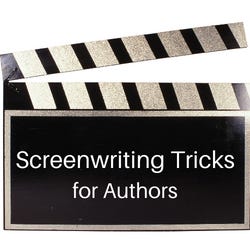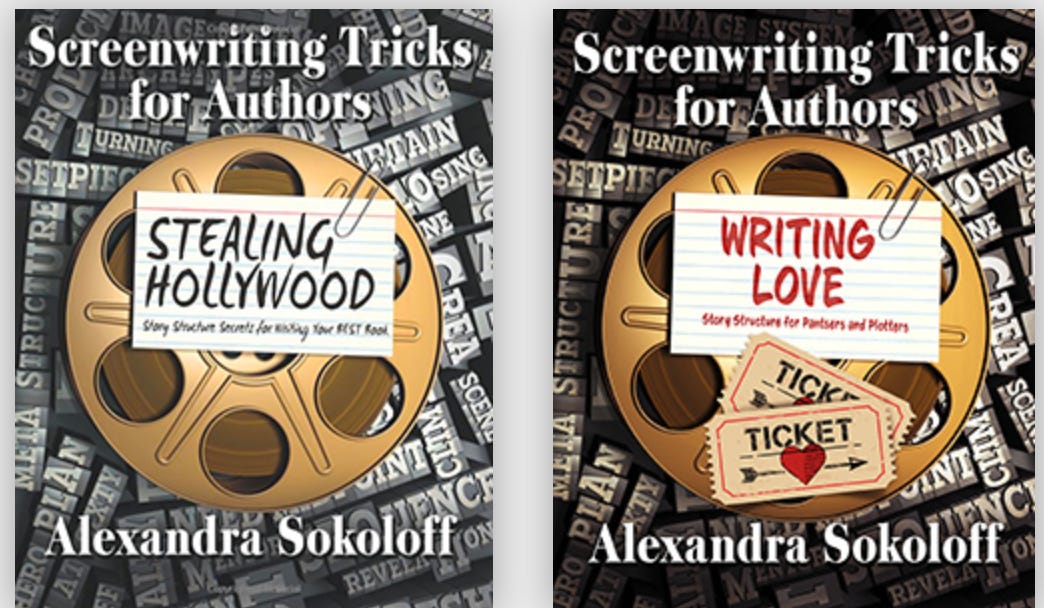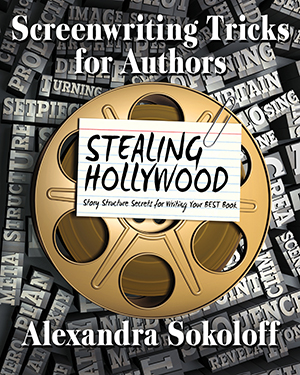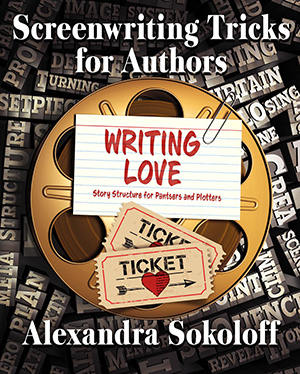So in this New Year, of all my Top Tricks to Get Yourself Writing Again, my Trick #1 is:
Fall in Love with Story Structure
I’m not ever going to try to talk anyone out of being a pantser! Your process is your process.To me, that’s not just personal, it’s sacred. But your muse will not drop dead if you learn something about plotting. Even a die hard pantser will find incredible shortcuts and writing boosters in story structure. And to those of you who find themselves hyperventilating at the word “structure,” let me assure you—you already KNOW this. I swear. You just need someone to break it down for you with examples that will mean something to you, and teach you the words that go with the concepts.
That’s why, book or script, I teach structure by analyzing popular movies and using lots of examples that you’ve already seen. Plus, watching movies—even just parts of movies— is something you can do almost every day. You can do it when you’re depressed, you can do it while you’re cleaning, you can do it when you’re caring for an ill loved one, you can do it if you’ve got the kids all day (Disney/Pixar movies are some of the best teaching movies!), you can do it even when you have no desire to do anything at all. And it is the absolute bottom line basis of what I teach in my books, and workshops, and blogs.

If you commit some hours NOW to learning how to analyze film story structure, then you truly can practice story by osmosis and grow as a writer every single time the TV is on, which for many of us is every day, too many hours a day.
Any movie that you already know well is a good choice. One that seems similar to what you are writing or want to write is a good choice. I always say make a Master List first. But you can learn just as much and sometimes more from a movie in any genre. In fact, the wider range of genres you study, the more you expand your craft. Many of the most successful books and movies slyly combine genres to create unique and surprising, or just more powerful, storylines, as we’ve been discussing with Selma.
If you’re new to consciously analyzing story structure, you can take one of the movies I break down Act by Act, Sequence by Sequence, Story Element by Story Element, in either Stealing Hollywood or Writing Love, or one of the movie breakdowns I’ve posted for paid subscribers:
I’m also starting to put some story analysis videos up on YouTube, so they’ll be in one place – have a look and Subscribe if you want more!
Choose a movie and watch it sequence by sequence:
-
Read or watch my notes before each fifteen-minute sequence
-
Watch the sequence, stopping at the end of the sequence to reread my notes
-
Make your own notes.
-
Proceed through the movie like this one sequence at a time.
Do that two or three times if you’re inspired to! Make this movie your “teaching movie.”
> After one screening, you have vastly expanded your understanding of story structure.
> After two screenings, another whole level of structure will be revealing itself.
> After three screenings, your mind will feel like it’s been blown open and you will be rabid to do it with another movie, and then another, and then another.
And you know what? It’s perfectly okay to stop “writing” completely and do just a month of THIS, with three or four movies, even. I really wish more writers would just trust themselves to do this. Because this is IS writing. And taking the time to do it will save you years of struggling.
After that month, you will come back to your own book or script with a level of mastery unlike anything you’ve experienced before.
And look, once you’ve made your first Master List and narrowed it down to the three movies you think are going to be most useful to you, let me know! Obviously I can and will go on about any movie I happen to fix on in my mind— but I would love to be using more examples that are specifically relevant to you!!
-
Alex
Review the 3-Act, 8-Sequence Structure
Subscribe now for free to get these posts in your inbox:

Need some help? The Screenwriting Tricks for Authors workshop is available online, as a self-paced course with all the videos, assignments, movie breakdowns and personalized feedback you need to get that book written this year, 15 minutes at time.
In three parts, and you only pay for what you use.
-
If you have a first draft of a book or script already, or need more feedback, get targeted help getting you over the finish line in The Writers’ Room.

Get the workbooks:
-
Stealing Hollywood $4.99, also available as print workbook
-
Writing Love $2.99




